Are you an RV owner living in a cold-weather climate? If so, then it’s essential to make sure your RV holding tanks are adequately protected against freezing temperatures! Storing the right amount of antifreeze in the holding tanks is one of the most important steps in winterizing your recreational vehicle. This blog post will discuss why proper antifreeze measurement is essential and how much RV antifreeze you should put into your holding tanks.
Table of Contents
What is RV Antifreeze?
RV antifreeze is a specialized type of coolant designed specifically for recreational vehicles, or RVs. It provides superior protection against freezing temperatures, corrosion and rust in the engine system. RV antifreeze is made from ethylene glycol, which has anti-freezing properties that work to protect your vehicle even in the coldest climates. The antifreeze also helps to keep the engine running at its optimal temperature, preventing overheating. Moreover, RV antifreeze is formulated with corrosion inhibitors to protect your vehicle’s metal parts from rust and other damage caused by contact with water. It can be used as a coolant in vehicles ranging from cars and trucks to RVs and boats.
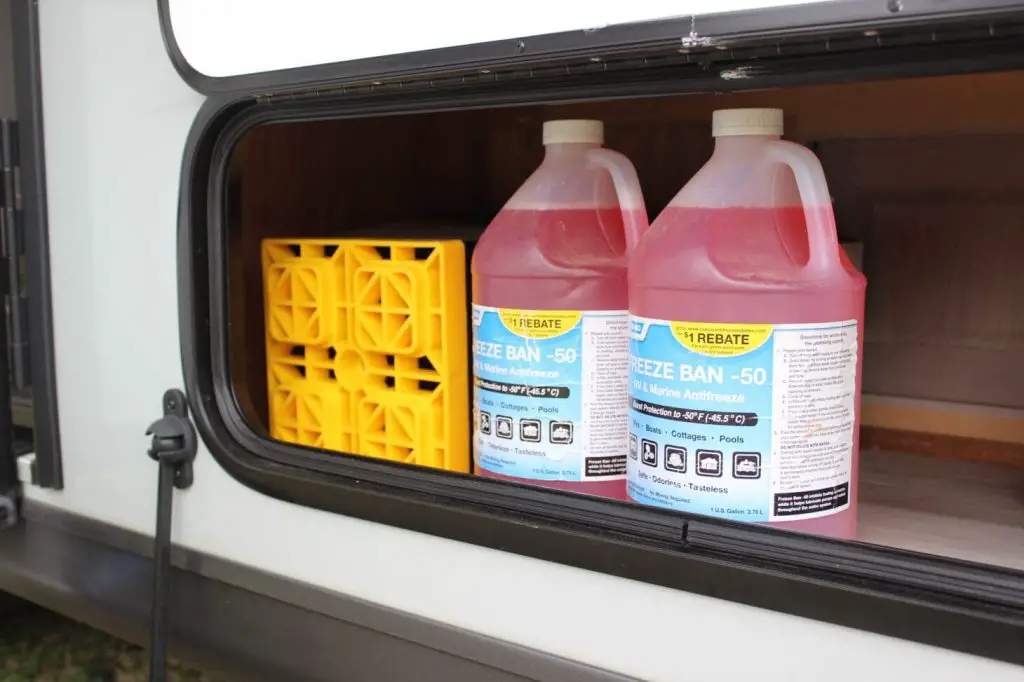
In addition, RV antifreeze is also used as a winterizing agent for the plumbing system in an RV. It helps to protect against freezing temperatures by creating a layer of insulation that prevents water from freezing and damaging pipes or fixtures. The antifreeze can be added directly to the RV’s fresh water system, or it can be poured into a container and placed on the floor of an RV to act as a buffer between the cold air outside and the warm air inside.
Additionally, it’s important to follow all of the instructions provided with the antifreeze to ensure proper installation and maintenance. Regularly flushing the system and replacing old antifreeze is essential for keeping your vehicle healthy and running efficiently. With the right care, RV antifreeze can help keep your RV or car in top condition throughout the year [1].
Which Holding Tanks Do You Put Antifreeze In?
Adding Antifreeze to the Fresh Water Tank
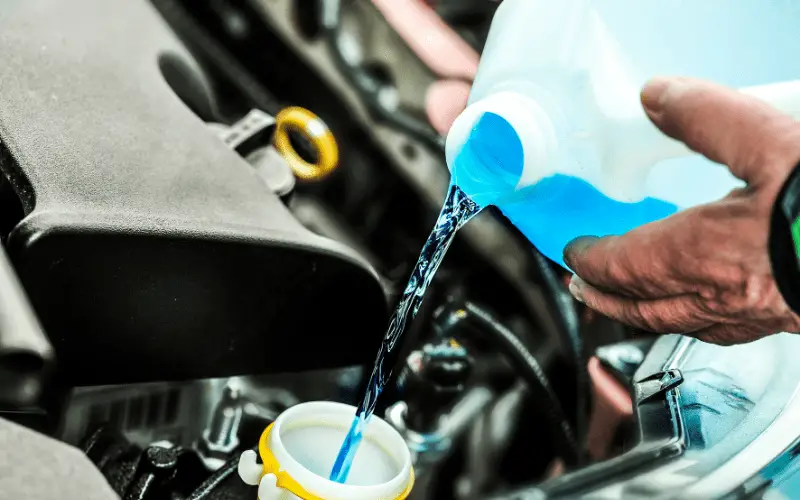
Adding antifreeze to the freshwater tank is a simple process, but it requires caution. First, start with a clean tank that has been emptied of all contents and flushed with clean water. Next, fill the tank with an RV-safe antifreeze solution and use a funnel if possible. Once the tank is full, open all faucets and flush the antifreeze through the entire system, including all lines. When finished, close the valves to prevent any more water from entering the tank.
Adding Antifreeze to the Waste Tank
The process for adding antifreeze to the waste tank is similar to that of adding it to a freshwater tank. Start by emptying the waste tank and flushing it with clean water. Next, fill the tank with an RV-safe antifreeze solution and use a funnel if possible. Once the tank is full, open all valves connected to the waste tank and flush the antifreeze through all lines. Be sure to pour some of the antifreeze into any drains located in the RV to ensure they are properly treated with antifreeze. When finished, close all valves and check that all drains are clear of any water or antifreeze.
How to Add Antifreeze to the Gray Water and Black Water Tanks
Adding antifreeze to the gray water and black water tanks is a little more complicated than adding it to the fresh and waste tanks. First, start by emptying both tanks and then flushing them with clean water. Next, fill each tank with an RV-safe antifreeze solution.
Once filled, open all valves connected to the tanks and flush the antifreeze through all lines. Be sure to also pour some of the antifreeze into any drains located in the RV to ensure they are properly treated with antifreeze. When finished, close all valves and check that all drains are clear of any water or antifreeze. Finally, add a few gallons of fresh water and flush it through all lines as well. This will help ensure that the antifreeze solution is completely flushed out of the system. After flushing, it’s a good idea to check the tanks and drains periodically to make sure there are no signs of leaking or damage.
How Much RV Antifreeze Should You Put in My RV’s Holding Tanks?
The amount of RV antifreeze solution needed for each tank will vary depending on the size and type of your RV, as well as its plumbing system. Generally speaking, a good rule of thumb is to use about a gallon of antifreeze solution per every 10 gallons of water in the tanks. It’s also important to remember that antifreeze can be toxic to animals and humans, so it’s important to keep any open containers of antifreeze out of reach of children or pets.
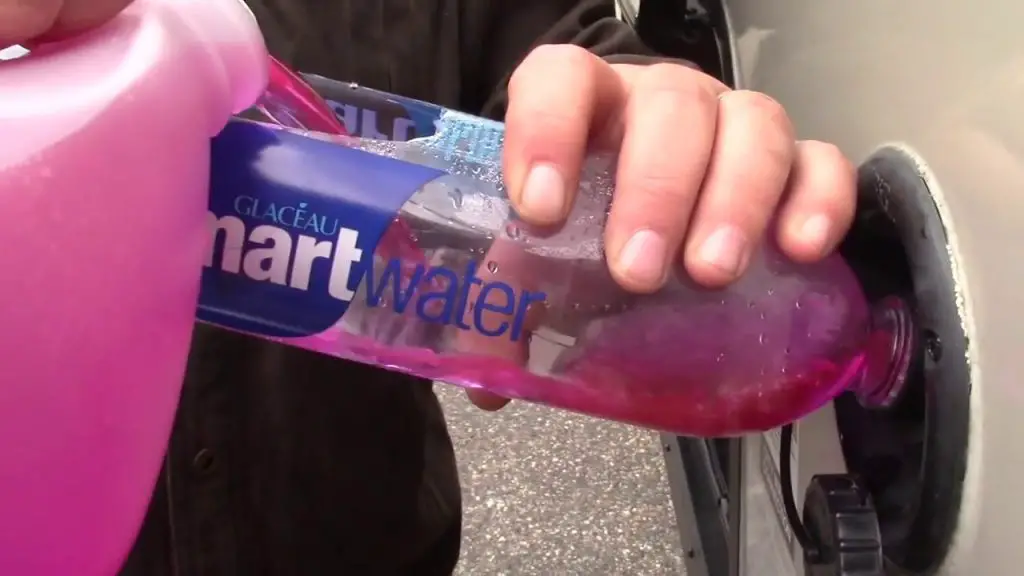
Once the tanks are filled with antifreeze, it’s a good idea to let them sit for at least 24 hours to make sure that all lines and valves are properly treated. This will also give time for any air bubbles to escape from the system. After 24 hours, it’s recommended to flush out the system with fresh water again before using your RV. This will ensure that there is no remaining antifreeze or toxic chemicals in your plumbing system.
It’s also important to remember that antifreeze can break down over time and needs to be replaced periodically to keep your system in top shape. Make sure to read the labels on any antifreeze solution you purchase to ensure that it is RV-safe and follow all instructions carefully when adding it to your tanks. With proper care and maintenance, your RV’s holding tanks will be safe and protected from freezing temperatures for many years to come [2].
Is There an Alternative To Putting Antifreeze in My RV Tanks?
RV Tanks Heating Pads
Fortunately, there is an alternative to using antifreeze in your RV tanks. One option is to use heating pads on the tank walls and pipes of your RV. This will provide just enough heat to keep things from freezing up without having to put antifreeze in the tank. Heating pads are relatively inexpensive and easy to install, so this can be a great way to save money and time.
Another option is to use an RV tank insulation kit, which will provide similar benefits as well as helping to prevent condensation from forming inside your tank. This can help keep the tanks warmer for longer periods of time and might reduce the need for antifreeze altogether. Tank insulation kits are also relatively inexpensive and easy to install, so this is another great way to protect your RV and save on costs.
RV Skirting
In addition to heating pads and tank insulation kits, another way to keep your tanks from freezing is to use RV skirting. This involves wrapping the outside of your trailer or motorhome with an insulated material. The skirt can help insulate the exterior walls and protect against cold temperatures that could cause the water in your tanks to freeze. Skirting is usually quite easy to install and remove, so it can be a great option if you are looking for something more permanent than heating pads or tank insulation kits.
Heated Hoses
Finally, you may want to consider investing in heated hoses. These are specially designed hoses that use electricity to heat the water inside and keep it from freezing up. This can be an ideal solution if you live in a cold climate and need extra protection for your tanks. Heated hoses are more expensive than other options, but they provide maximum protection against freezing temperatures.
Overall, there are several ways to protect your RV tanks from freezing without having to use antifreeze. From heating pads and tank insulation kits to RV skirting and heated hoses, there are plenty of options available for you to choose from depending on your needs and budget. Taking the time to do some research and find the best solution for you will help ensure that your tanks are well-protected and free from damage or freezing [3].
What happens if you don’t put antifreeze In RV Holding Tanks?
When the temperatures start to drop, RV holding tanks must be filled with antifreeze. If you don’t use any antifreeze in your RV holding tanks, the water inside can freeze and expand. This can cause several problems, from cracked pipes to damaged valves, seals, and other parts. In some cases, it can even lead to a ruptured holding tank, which is incredibly expensive and time-consuming to repair.
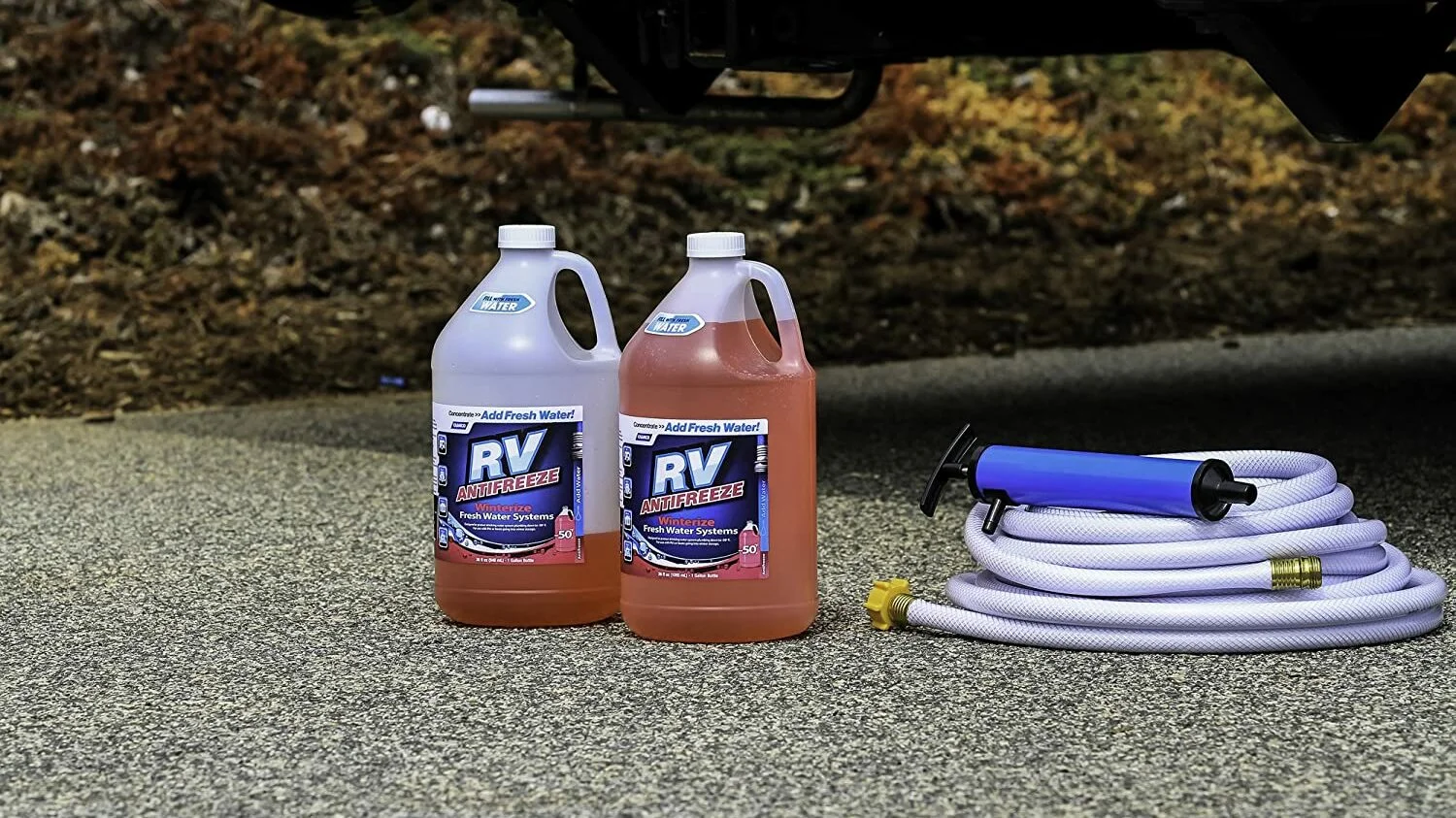
For this reason, it’s important to use antifreeze in your RV holding tanks any time the temperature drops below freezing. Not only does this protect your unit from costly damage, but it also helps keep water available for use throughout the season – even when the temperatures dip.
Additionally, it’s important to use a non-toxic antifreeze in your RV holding tanks. This ensures that you won’t contaminate any water sources downstream and can help keep the environment clean and healthy. There are several types of RV-safe antifreeze available on the market, so make sure you read labels carefully before making your purchase.
Finally, don’t forget to check the levels of antifreeze in your RV holding tanks periodically throughout the season. A low level can leave you vulnerable to freezing and potential damage, so it’s important to top off as needed. Taking a few preventative measures now can help ensure that you don’t have to deal with any costly repairs down the line!
Of course, you should also take other precautions when temperatures drop. Make sure to check all your RV’s pipes and valves for signs of cracking or leaking, and keep an eye on any hoses connected to the holding tanks. A few minutes of preventative maintenance today can help save you a lot of time and money in the future.
FAQ
How much antifreeze do I put in my RV tank?
The recommended amount of antifreeze varies based on the type and size of your RV’s tank. Generally, it is best to refer to your owner’s manual for the exact amount of antifreeze needed. Typically, you will need between 1-2 gallons of non-toxic propylene glycol for a 30-gallon water tank. Make sure to follow the instructions carefully, as too much antifreeze in your tank can be harmful. Additionally, it is important to remember that regular maintenance of your RV’s water system is essential for keeping your tank free from bacteria and other contaminants. It may also be helpful to install a water filter system or other type of treatment system to keep your drinking water safe.
Should I put antifreeze in my RV holding tanks?
No, antifreeze should not be used in your RV’s holding tanks. While it may seem like a good idea to use antifreeze as a preservative for these tanks, it can damage the tank and cause leaky seals. Instead of antifreeze, you should use specialized cleaners and treatments designed specifically for RV holding tanks. This will help keep your tank clean and free of bacteria, while also extending its life. Make sure to refer to the manufacturer’s instructions for maintenance as well.
How do I winterize my RV?
Winterizing your RV involves several steps to protect it from freezing temperatures and other potential damage. This includes draining all tanks and lines, adding antifreeze, lubricating the water pump, and covering any exposed pipes. Additionally, it is important to check your tires for proper inflation as cold air can cause them to lose pressure. It may also be helpful to wrap any exposed plumbing with insulation or heating tape to prevent freezing. After winterizing your RV, make sure to use a de-winterizing kit before your next trip to remove any remaining antifreeze and flush out the water system. Doing so will help ensure that your RV is in tip-top shape for all of your future adventures.
What other steps should I take to maintain my RV in winter?
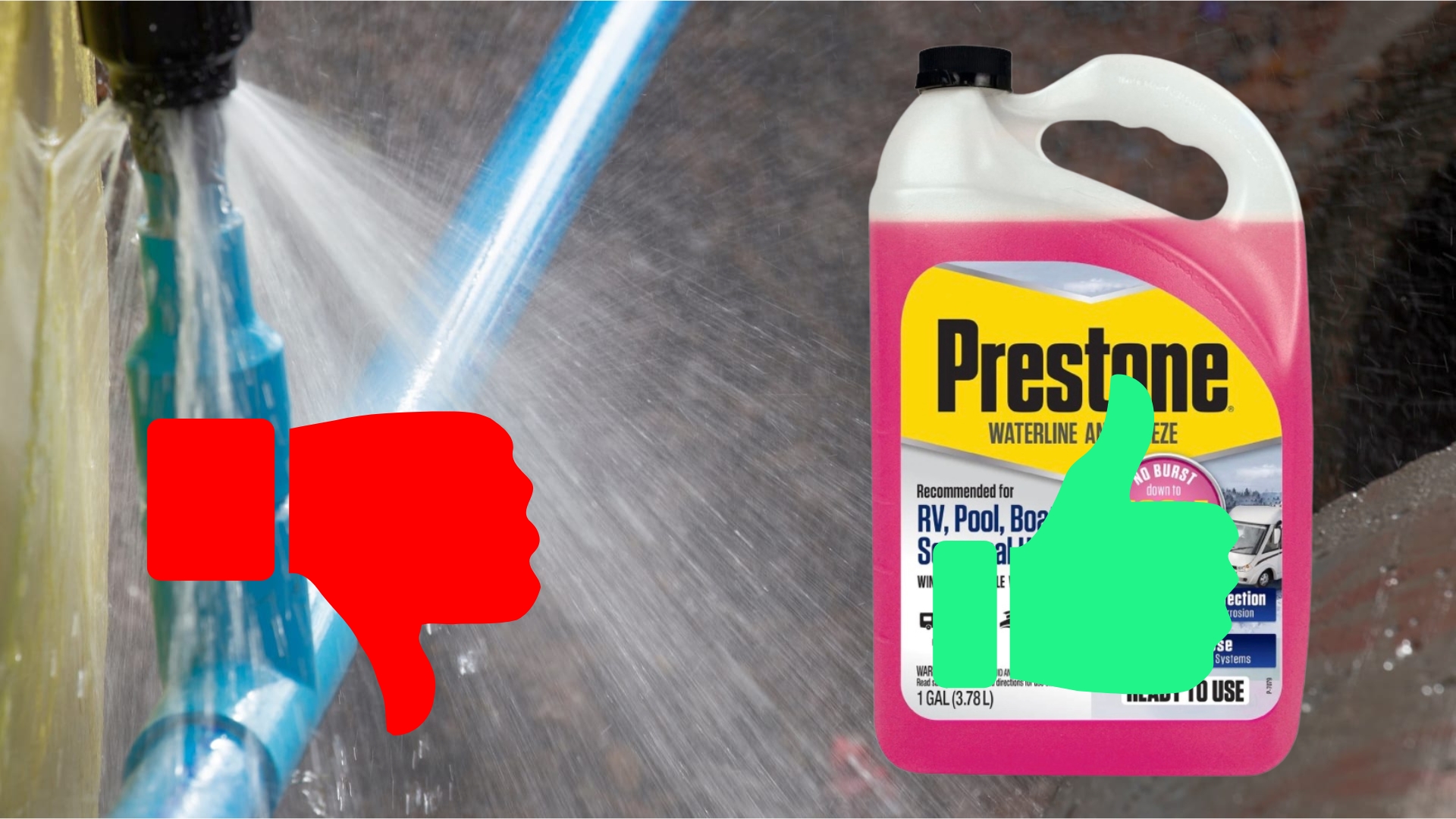
In addition to winterizing your RV, there are other maintenance steps you should take in the colder months. This includes cleaning and lubricating your RV’s locks and hinges, inspecting your generator for proper operation, and making sure that all of the interior lights and appliances are working properly. Additionally, it can be beneficial to store any items that could freeze or become damaged during cold weather inside your RV. Be sure to check with the manufacturer for additional maintenance tips and tricks that can help keep your RV running smoothly all year long. With a few simple steps, you can ensure that your RV will be ready for whatever winter throws its way.
What are some helpful tips for storing an RV during winter?
When it comes to storing an RV during winter, there are a few important tips you should keep in mind. First, it is essential to make sure that all of your tanks and lines are drained and the water system has been winterized. Additionally, it can be helpful to cover your RV with a tarp or other type of protective covering for extra protection against the elements. It is also important to inspect your RV for any leaks or damage that might have occurred over the summer and make sure to repair them before storage. Finally, make sure to keep your RV in a dry location out of direct sunlight during winter months. Following these tips can help ensure that your RV is ready for use whenever you need it.
What accessories should I bring on an RV trip?
When planning an RV trip, it is important to make sure you have all the necessary accessories for a comfortable journey. This includes items like hoses and connectors to connect your water tank, extra batteries, and flashlights for nighttime use. Additionally, it may be helpful to bring along extension cords and surge protectors in case you need additional power sources. It can also be useful to bring a set of stabilizing blocks for uneven terrain and a camping chair or two for relaxing outdoors. With the right accessories, you can ensure that your RV trip is a fun experience.
What are some safety tips I should follow while on an RV trip?
When taking an RV trip, it is important to take certain safety precautions. This includes performing thorough pre-trip inspections of your RV and its systems, maintaining a safe distance between vehicles while driving, and avoiding areas with large animals or other wildlife. Additionally, it is essential to always wear your seatbelt when inside the RV and keep all exits clear in case of an emergency. Finally, make sure you have a first-aid kit handy and are familiar with basic safety procedures if something does go wrong. By following these tips, you can ensure that your RV trip is enjoyable and worry-free.
Why should you put antifreeze in a black water tank?
Antifreeze should not be put in a black water tank. While it may seem like a good idea to use antifreeze as a preservative for these tanks, it can damage the tank and cause leaky seals. Instead of antifreeze, you should use specialized cleaners and treatments designed specifically for RV holding tanks. This will help keep your tank clean and free of bacteria, while also extending its life. Make sure to refer to the manufacturer’s instructions for maintenance as well.
Additionally, it is important to note that emptying your black water tanks regularly is essential for preventing any unpleasant odors and maintaining a healthy RV environment. Regularly checking and cleaning out your black water tanks can help ensure that your RV is running optimally and that you have a pleasant trip. It is also important to use the right type of cleaning agent when emptying your black water tanks, as some products may be too harsh for the sensitive material of RV holding tanks. By taking these simple steps, you can help keep your RV clean and safe all year round.
What other types of treatment should I use for my RV holding tanks?
In addition to cleaners and treatments designed specifically for RV holding tanks, other options can help maintain your tank’s condition. For example, using an enzyme-based cleaner or deodorizer in the tank can help break down solids and eliminate odors. Additionally, it is important to rinse out your holding tanks with fresh water after each use, as this will help prevent build-up and keep your RV running smoothly. Finally, make sure to check all of the seals on your holding tank regularly to ensure that there are no leaks or damage. Following these simple steps can help extend the life of your RV’s holding tanks and keep it performing at its best.
Useful Video: RV Tip – Antifreeze into Fresh Water Tank
Conclusion Paragraph
To choose the right amount of Antifreeze for putting into RV holding tanks, it is important to refer to the manual of your specific RV model. Antifreeze helps protect against permanent damage from freezing temperatures, and it prolongs the life of your holding tanks. If you are not sure how much antifreeze to add, contact a professional dealer or service center for assistance. In addition to using antifreeze in your holding tanks, always make sure to empty them before storing your RV for the winter. This will help reduce the chance of any accidental freezing and can also help cut down on odors. Taking care of your holding tanks is essential to keeping your RV in top condition, and using antifreeze can be a great way to ensure that they stay safe and healthy during colder temperatures.
References:
- https://www.doityourselfrv.com/rv-antifreeze/
- https://camperfront.com/how-much-rv-antifreeze-to-put-in-holding-tanks/
- https://www.rvrank.com/post/how-much-rv-antifreeze-to-put-in-holding-tanks

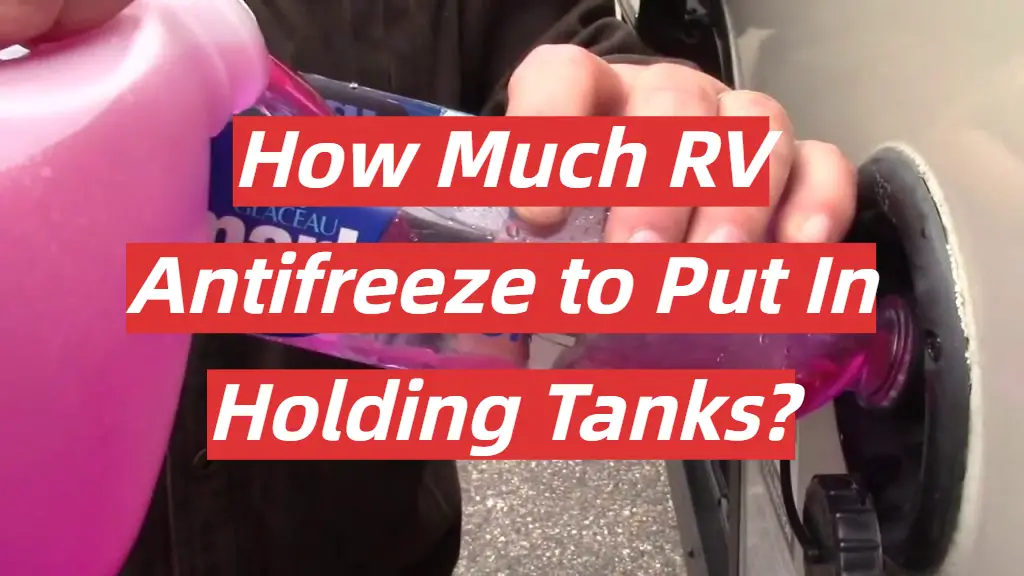



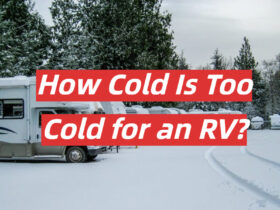
Leave a Reply